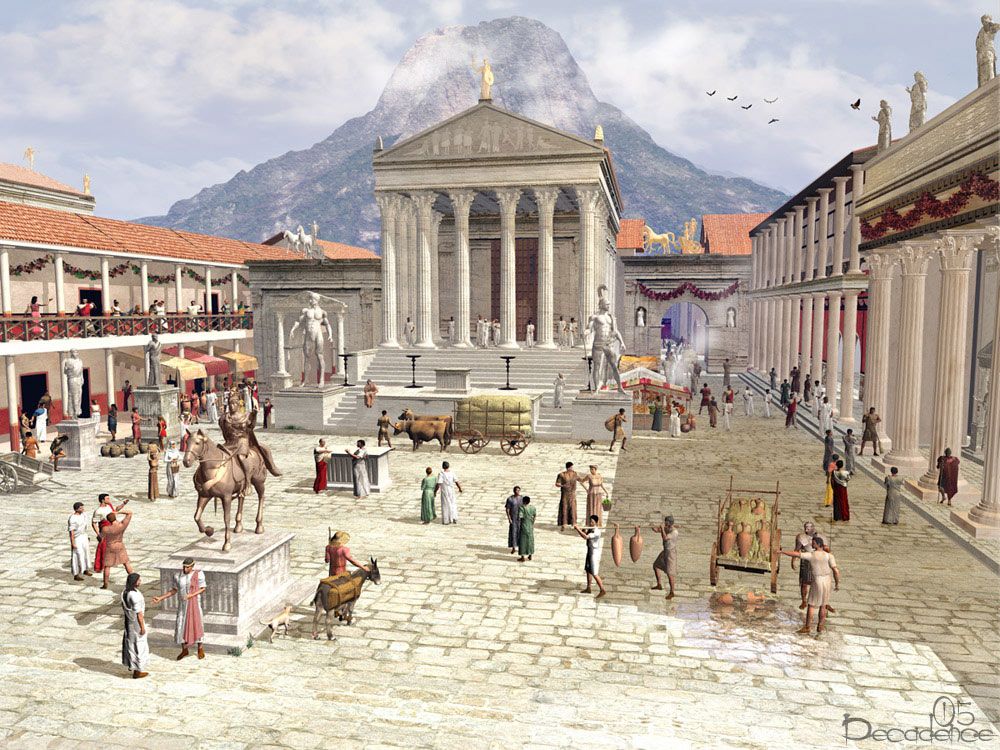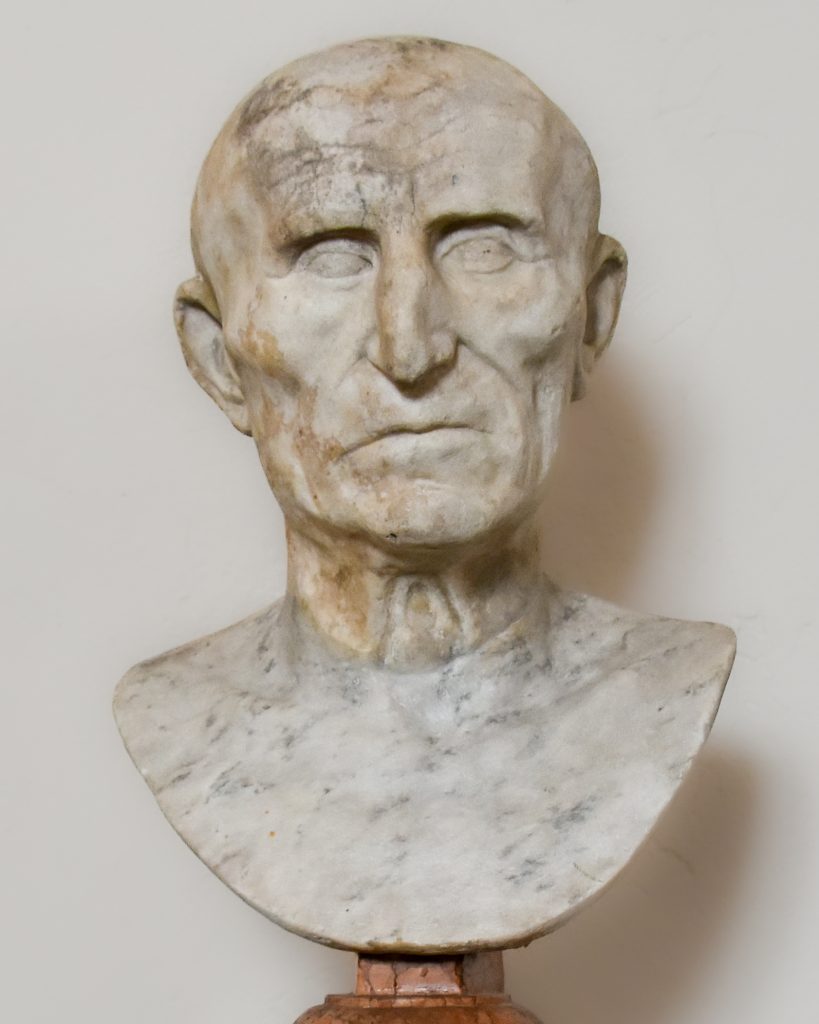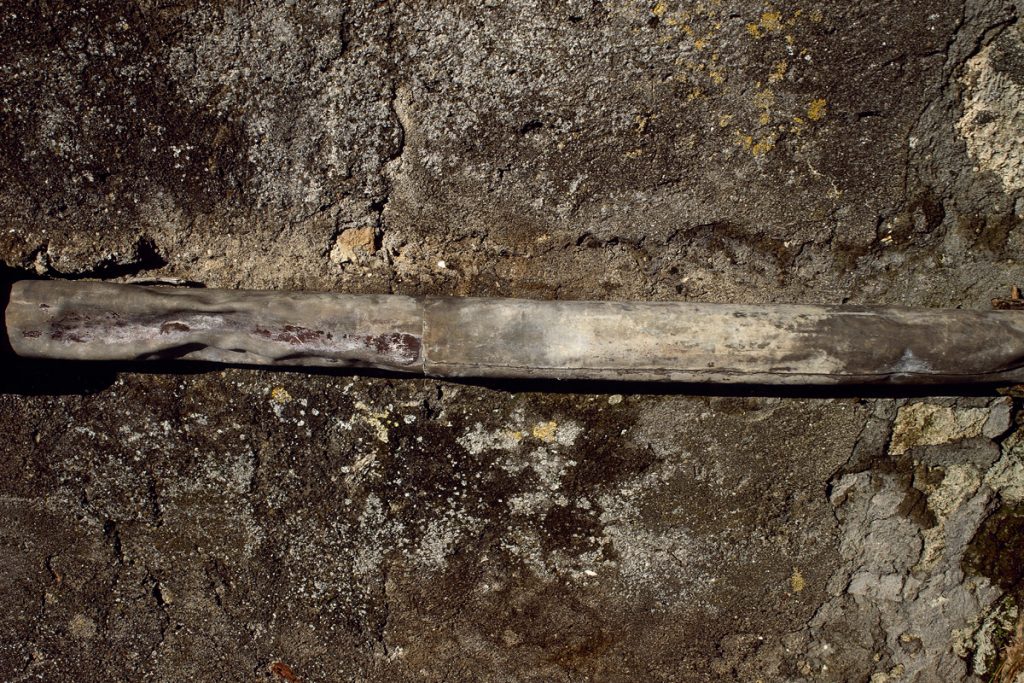The eruption was just the last straw in a series of calamities.
The ruins of Pompeii is one of the more fascinating sites in Southern Italy. But we’re not going to discuss the eruption and its aftermath. Rather, we want to cover what was going on in Pompeii just prior to the eruption (August or October, 79 CE). What the guide books don’t talk about but historians have uncovered suggest things were not that rosy.
First, some background. By the year of the eruption, Pompeii was estimated to have about 12,000 inhabitants inside the city walls, of whom about 40% were slaves, with another 20,000 living in the suburbs. With such a concentration of people, Pompeii was a frenetic place — shops selling various food stuffs, laundry companies cleaning clothes, the wealthy going to the forum with their entourage, contractors trying to rebuild the city, goods coming in and out of the port, slaves doing the chores of their owners, production facilities going full force, and prostitutes selling their wares.

Titus was emperor, having succeeded his father Vespasian, beginning a period of relative calm. The empire had just gone through 130 years of strife — two major civil wars, a change from a republic to an empire, the likes of Caligula and Nero, an expansion of political influence of the military, and the craziness of 69, in which 4 emperors ruled (each in succession murdered).
FYI, in the year of the four emperors, Galba, one of the four, had the best description, attributed to the historian Tacitus, ever written about someone not living up to expectations:

“It was everyone’s opinion that, so long as he was a subject, he seemed too great a man to be one, and by common consent possessed the makings of a ruler…had he never ruled” (Tacitus, Histories 1.49).
Back to Pompeii. In 79 AD, the city was still recovering from an earthquake that had occurred 17 years earlier. There wasn’t much financial aid coming from Rome because money was wasted by Nero on palaces and major building works in Rome. The empire was just getting by at this time, and couldn’t easily help cities that ran into trouble.
To add to its woes, Pompeii, once the primary port for goods shipped from the far east, was losing its prestige, and its business, to other emerging towns in the area. Neapolis (the future Naples), for example, was gradually chipping away at Pompeii’s export businesses.
Pompeii also suffered from backing the wrong horse — the leading families in this city had been staunch supporters of Nero, and when he was eliminated, they lost their power base, and their attachment to Nero was not looked on kindly, nor forgotten, in Rome.
Picking the wrong side seems to have been a habit here— Pompeii also attempted to rebel against Rome about 150 years before, along with other major cities in Campania. As a result of participating in this revolution, quite a bit of acreage was taken away from the residents and given to war veterans.
Finally, the city had just come off a 10 year ban on gladiatorial games, due to an incident with a neighboring town, Nuceria. Here’s what happened. The citizens of Pompeii considered their city to be superior to Nuceria — it was wealthier, more cosmopolitan, and, most importantly, had a better arena. However, over time, the Pompeii arena was showing signs of fatigue, and the Nucerians would scribble on Pompeii’s walls advertisements for their own better arena and games.
Eventually, as Nuceria attracted more and more people away from the Pompeii games, the Pompeiians had enough, and riots broke out between the two cities. When the case was put forward in Rome, Pompeii was judged to be at fault, and suffered a heavy price: ring leaders were sent into exile, and the ban was placed on the games for the entire city — losing the games was a huge price to pay in those days.

Now that’s not to say that Pompeii was in total disarray. The city was still an exciting place to live. It was the playground of wealthy Romans, so there was the tourist money. The city had paved roads (one and two way), 25 fountains for public use, a couple of public baths, running water via lead pipes (that couldn’t have been too good), magnificent palaces, a beautiful forum, theatres, and the aforementioned arena. Some historians think that, by 79 AD, Pompeii had reached its high point in Roman society.

The area exported a good quality wine, especially that which came from grapes grown on the slopes of Vesuvius. Additionally, the Campania region was the center of perfume production, and Pompeii was a dominant player. Pompeii was also known as a producer of garum, a flavor enhancement for all kinds of food. Garum was actually a condiment considered a luxury in Roman society, depending upon its quality, and was used in many recipes. It was these industries — perfume, garum, and wine — that were losing market share to other local producers.

So, here is a town that was losing income, had its major form of entertainment taken away, was viewed with at least mild suspicion by the authorities in Rome, was still in shambles from the earthquake, and probably had a few residents suffering from lead poisoning. The last thing the city needed was an angry Vesuvius.
But then again, as a positive, after August or October, 79 CE, all of Pompeii’s other problems went away.







